Sponsored Links
Introduction to TV Production
An Introduction to TV Production
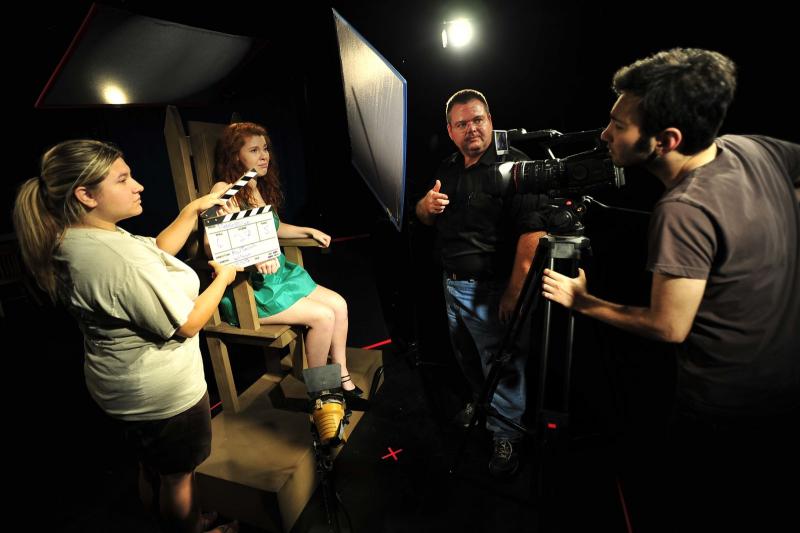
I'm going to assume you're serious about this; that you want to learn more than you'd need to know just to make home movies of your vacation, your little brother's birthday party, or your trip to other places and Disneyland.
The instruction manual that came with your camcorder or DSLR should cover these needs.
Although most who use these modules study in class situations, many people go through these modules on an individual basis -- i.e., they work for government agencies, TV production facilities, or they just need a personal understanding of the concepts.
In this digital age almost anyone with a digital video camera, a computer, and creative talent can put together a fairly impressive movie without the array of people and equipment covered in this cybercourse. There are thousands of such videos on sites like YouTube.
At the same time I've found that those who win ongoing recognition for their work almost always draw upon an understanding of the full production process.
Although the modules emphasize studio and field production for broadcast television, what's presented will be applicable to a wide variety of audio- and video-based media. It's all pretty much the same once you know the basics.
Of course, it's desirable to have audio and video equipment to work with -- either personal equipment or equipment provided in a school or lab setting.
Some equipment may not be available to you. That's okay; it's important to understand the equipment and techniques that are part of larger production facilities.
For one thing, you may suddenly be confronted with an internship or job opportunity where this knowledge is essential. Or, you could easily be asked about some of these things in a job interview.
Camerapersons, writers, directors, producers, and even on-camera talent find that having a solid understanding of the tools and techniques of the entire process makes a major difference in the success of productions -- not to mention their careers.
In television production, as in most of today's high-tech areas, knowledge is power.
This list is long, but have you noticed the lengthy credit lists for major films and TV programs?
The person in charge of launching entire production is generally the producer.
Although there are various types of producers for major productions, we'll stick with basic, traditional definitions here.
He or she comes up with the program concept, lays out the budget for the production, and makes the major decisions.
This person is the team leader, the one who works with the writers, hires the director, decides on the key talent, and guides the general direction of the production.
In smaller productions the producer may also take charge of the more mundane activities. And in small productions the director may handle the producer's responsibilities. In this case, the combined job title becomes (want to guess?), producer-director.
Some productions may also have an associate producer who sets up schedules for the talent and crew and who generally assists the producer.
On a major production, one of the producer's first jobs is to hire or assign a writer to write the script (the document that tells everyone what to do and say). The script is like a written plan or blueprint for the production.
The producer will next consider the key talent for the production. In general, the talent includes actors, reporters, hosts, guests, and off-camera narrators -- anyone whose voice is heard or who appears on camera.
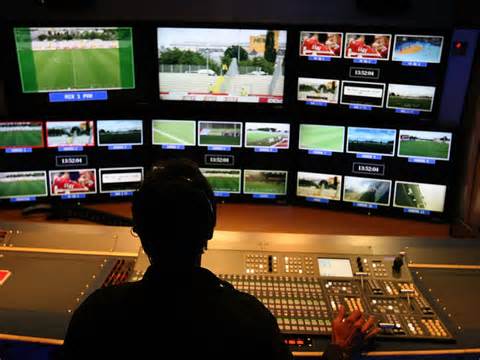
Sometimes talent is broken down into three sub-categories: actors (who portray other people in dramatic productions), performers (who appear on camera in nondramatic roles), and announcers (who generally don't appear on camera).
In a large production, the producer will hire or assign the director.
The director is in charge of working out preproduction (before the production) details, coordinating the activities of the production staff and on-camera talent, working out camera and talent positions on the set, selecting the camera shots during production, and supervising postproduction (after production) work.
In other words, once the producer sets things in motion, the director is in charge of taking the script from the beginning to the very end of the production process.
Assisting a director in the control room is typically a technical director who operates the video switcher. The technical director, or TD, is also responsible for coordinating the technical aspects of the production.
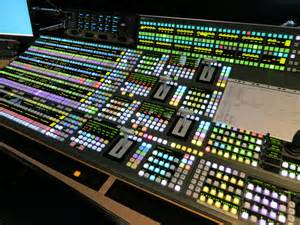
One or more production assistants (PAs) may be hired to help the producer and director. Among other things, PAs keep notes on ongoing production needs and changes.
The lighting director (LD) designs the lighting plan, arranges for the lighting equipment, and sets up and checks the lighting.
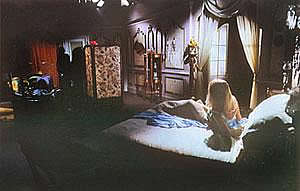
As we'll see, lighting is a key element in the overall look of a production.
Some productions have a set designer who, along with the producer and director, designs the set and supervises its construction, painting, and installation.
The makeup person, with the help of cosmetics, hair spray, etc., sees that the talent look their best -- or their worst, if that's what the script calls for.
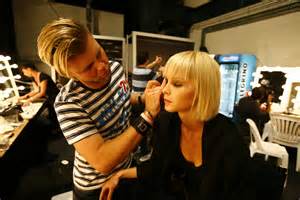
Makeup is just one of the areas where a link will take you to advanced information. It should be emphasized that specific responsibilities of production personnel will vary widely, depending on the production facility. In Europe, and in particular at the BBC (British Broadcasting Corporation) in London, these distinctions are made.
Let's resume our list of the key people involved in TV production.
Major dramatic productions have a wardrobe person who sees that the actors have clothes appropriate to the story and script.
The audio director or audio technician arranges for the audio recording equipment, sets up and checks mics (microphones), monitors audio quality during the production, and then strikes (another production term meaning disassembles and, if necessary, removes) the audio recording equipment and accessories after the production is over. (Mic, strangely enough, is pronounced mike.)

The microphone boom/grip operator watches rehearsals and decides on the proper mics and their placement for each scene. During an on-location (out-of-the-studio) shoot, this person may need strong arms and steady hands to hold the mic boom over the talent for long periods of time.
The video recorder operator arranges video recording equipment and accessories, sets up video recordings, performs recording checks, and monitors video quality.
In dramatic productions, the continuity secretary (CS) carefully makes notes on scene and continuity details as each scene is shot to ensure that these details remain consistent among takes and scenes.
As we will see, this is a much more important job than you might think, especially in single-camera, on-location production.
Once production concerns are taken care of, the continuity secretary is responsible for releasing the actors after each scene or segment is shot.
The CG Operator, (electronic character generator operator) programs (designs/types in) opening titles, subtitles, and closing credits into a computer-based device that inserts the text over the video.
Camera operators do more than just operate cameras. They typically help set up the cameras and ensure their technical quality, and they work with the director, lighting director, and audio technician in blocking (setting up) and shooting each shot.

On a field or EFP (Electronic Field Production, or on-location) production, they may also coordinate camera equipment pickup and delivery.
Depending on the production, there may be a floor manager or stage manager who's responsible for coordinating activities on the set. One or more floor persons, or stagehands, may assist him or her.
After shooting is completed, the editors use the video and audio recordings to blend the segments together. Technicians add music and audio effects to create the final product.
The importance of editing to the success of a production is far greater than most people realize. As we will see, an editor can make or break a production.
This finishes the list of people and what they do. We'll revisit these as we go along, so don't worry if you don't remember them all at this point.
Now for the production itself.
The Three Production Phases
The production process is commonly broken down into preproduction, production, and postproduction, which some people roughly characterize as "before, during, and after."
The Preproduction Phase
There is a saying in TV production: Preproduction is the most important part of any production.
The importance of this is often more fully appreciated after things get pretty well messed up during a production and the production people look back and wish they had adhered to this axiom from the start.
In preproduction the basic ideas and approaches of the production are developed and set in motion. It is in this phase that the production can be set on a proper course or misdirected (messed up) to such an extent that no amount of time, talent, or editing expertise can save it.
The Prime Directive
"Trekkies" know thatStar Trek has its prime directive. So does TV production: Hit the target audience.
In order for the program to be successful, you must keep in mind throughout each production phase the needs, interests, and general background of the target audience (the audience your production is designed to reach). In order for your program to have value and a lasting effect, it must in some way affect the audience emotionally.
This assumes both knowledge of the prime directive and the target audience, and it ends up being a key to your professional success
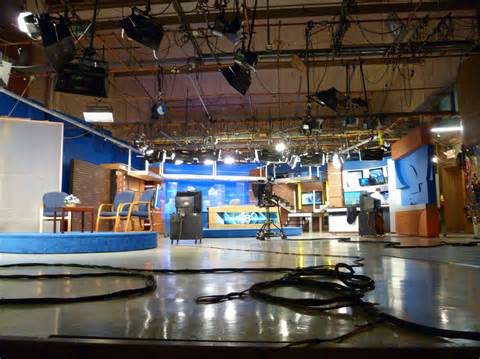
During preproduction, not only are key talent and production members selected, but all the major elements are planned. Since things such as scenic design, lighting, and audio are interrelated, they must be carefully coordinated in a series of production meetings.
Once all the basic elements are in place, rehearsals can start.
A simple on-location segment may involve only a quick check of talent positions so that camera moves, audio, and lighting can be checked.
A complex dramatic production may require many days of rehearsals. These generally start with a table reading or dry rehearsal where the talent along with key production personnel sit around a table and read through the script. Often, script changes take place at this point.
Finally, there's a dress rehearsal. Here, the talent dresses in the appropriate wardrobe, and all production elements are in place. This is the final opportunity for production personnel to solve whatever production problems remain.
The Production Phase
The production phase is where everything comes together (we can hope) in a kind of final performance.
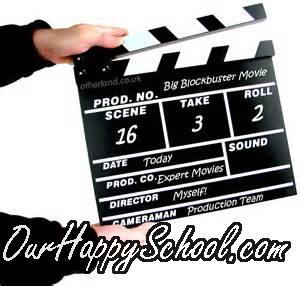
Productions can be broadcast either live or recorded. With the exception of news shows, sports remotes, and some special-event broadcasts, productions are typically recorded for later broadcast or distribution.
Recording the show or program segment provides an opportunity to fix problems by either making changes during the editing phase or stopping the recording and redoing a segment.
And, Finally, the Postproduction Phase
Tasks, such as striking (taking down) sets, dismantling and packing equipment, handling final financial obligations, and evaluating the effect of the program, are part of the postproduction phase.
Even though postproduction includes all of these after-the-production jobs, most people associate postproduction with editing.
As computer-controlled editing techniques and postproduction visual effects (VFX) have become more sophisticated, editing has gone far beyond the original concept of simply joining segments in a desired order. Editing is now a major focus of production creativity.
Armed with the latest digital effects, the editing phase can add much in the way of razzmatazz to a production. In fact, it's pretty easy to become enthralled with the special effect capabilities of your equipment.
As fun as all the razzmatazz effects might be to play with, you should consider all this high-tech stuff merely a tool for a greater purpose: the effective communication of ideas and information.
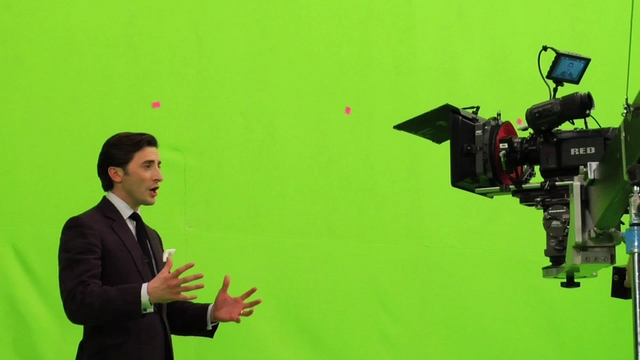
If that sounds a bit academic and stuffy, you might want to look at things from a broader time line.
If you think about it, today's latest high-tech effects will look pretty lame a few years from now. (Think of the visual effects in some early films.)
It's only the ideas and feelings that have a chance of enduring.
How many times have you seen a movie and forgotten about it almost as soon as you left the theater? In contrast, some movies seem to "stick with you," and you may think about them for days or even weeks.
As we noted, average adults spend more than 150 hours each month watching television Today, the average U.S. home has more TV sets than people.
The medium you are learning to control can be used either to provide audiences with time-wasting, mindless, drivel...
...or with ideas that can make a positive difference in the overall scheme of things. (And, as you may have noticed, there is a definite need in the world for people who can make a positive difference.)
How would you rather have your work and life remembered?
Suggested supplementary reading: Click here




